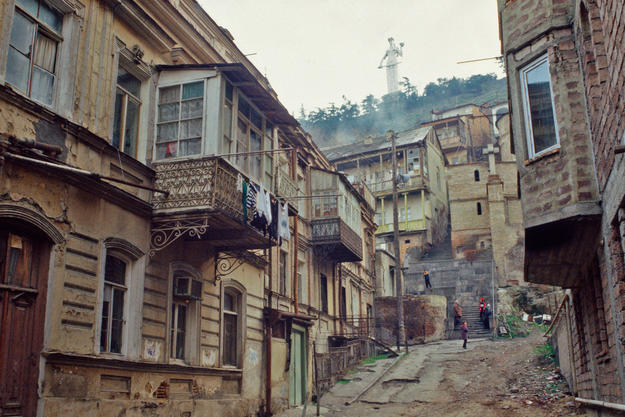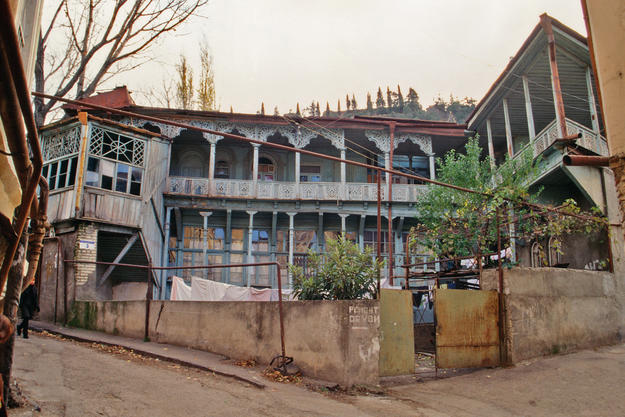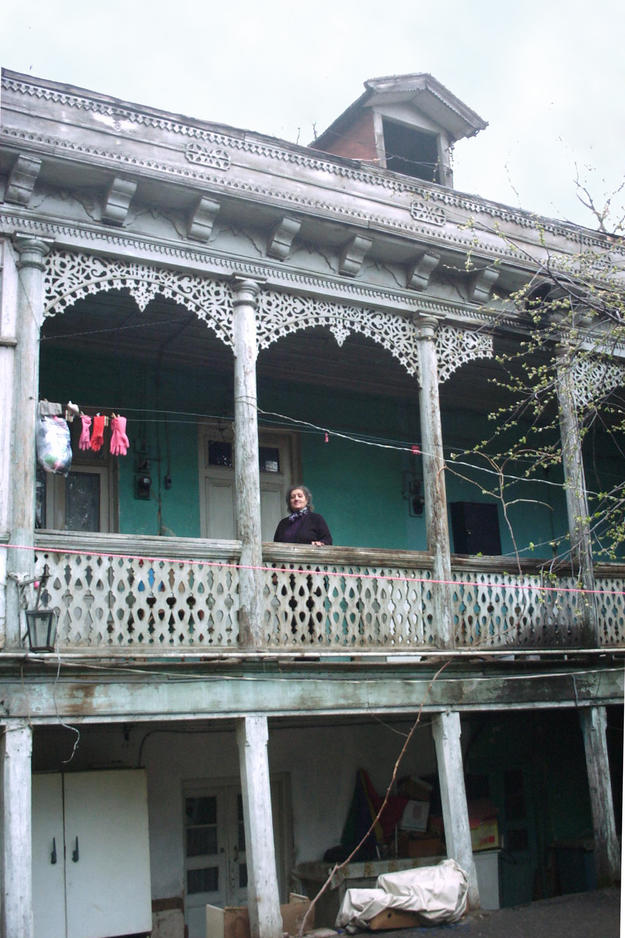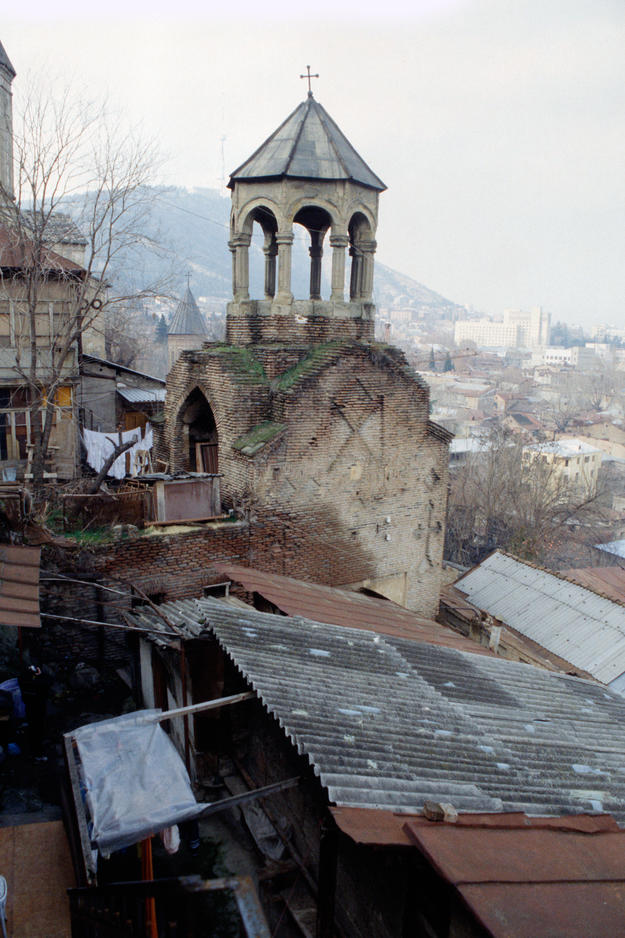Located at a crossroads of Europe and Asia on the famous Silk Road, Tbilisi has faced repeated invasions since its founding in the fifth century as rival powers have sought to control its strategic position. The city has been the capital of Georgia for 15 centuries and in that span of time has undergone many periods of reconstruction, resulting in an interesting mix of architecture that reflects the long history. Despite the frequent building activity, the historic district has retained its planned medieval structure. Along the narrow winding streets, traditional Tbilisi dwellings and various religious buildings, some dating to the medieval period, create an eclectic yet harmonious aesthetic unity. The vernacular architecture combines age-old Georgian building practices with a range of foreign influences, reflecting centuries of diverse cultural influences. Unfortunately, neglect, inadequate maintenance, intentional demolition, and inappropriate alterations have led to the deterioration of the physical and artistic integrity of many fine examples of historic architecture.
1998, 2000 and 2002 World Monuments Watch
In 1998, ICOMOS Georgia launched Save Old Tbilisi, an initiative to identify, conserve, and legally protect key pieces of Tbilisi’s architectural heritage. The structures selected for the pilot project, known as the Betlemi group, contain important architectural features found throughout the historic district, such as horizontal and vertical tower-like dwellings, flat roofs, stained glass architectural elements, and open woodwork balconies. Tbilisi Historic District was placed on the 1998, 2000, and 2002 World Monuments Watch. After the 1998 listing, the city was nominated to the UNESCO World Heritage List and the Zemo Kala Quarter was chosen as one of the major sites of the World Bank Cultural Heritage Initiative. The Watch listings assisted Save Old Tbilisi in their successful promotion of the district and facilitated funding for several projects. WMF supported a comprehensive study and documentation of the Betlemi micro-quarter in 2000. After a severe earthquake in 2002, WMF partnered with ICOMOS Georgia to create an emergency stabilization plan for the Betlemi group and assisted in implementation of conservation and documentation projects.
Since Georgia became an independent nation in 1991, Tbilisi, like many other former Soviet cities, has worked to reestablish its individual identity. However, aggressive modernization and socio-economic difficulties have threatened the city’s valuable urban fabric. Save Old Tbilisi has generated positive public awareness activities within the local community and encouraged residents to get involved with building repairs. Without the stabilization efforts after the 2002 earthquake, many of the historical buildings in the Betlemi micro-quarter would have collapsed. Tbilisi provides an extraordinary example of Georgian urban heritage.




